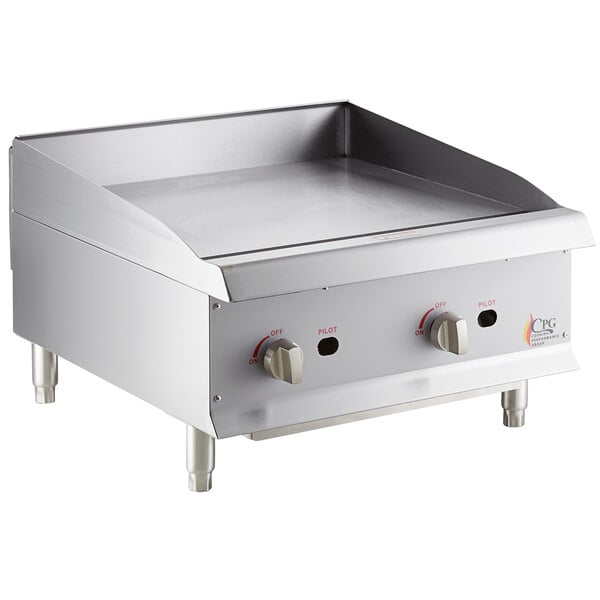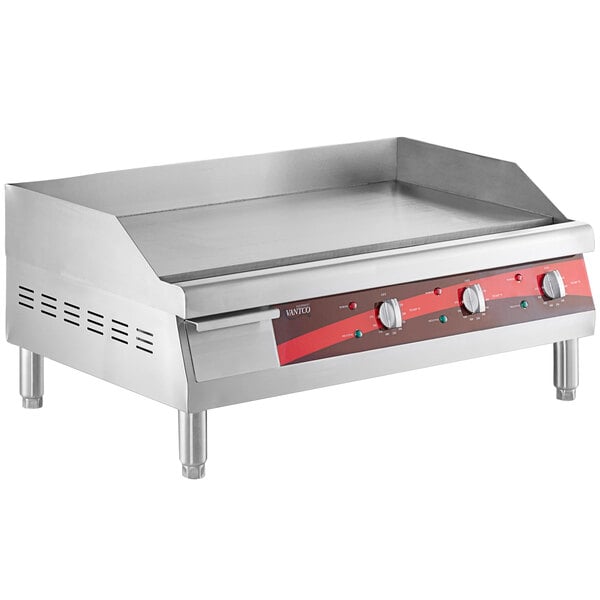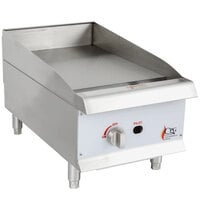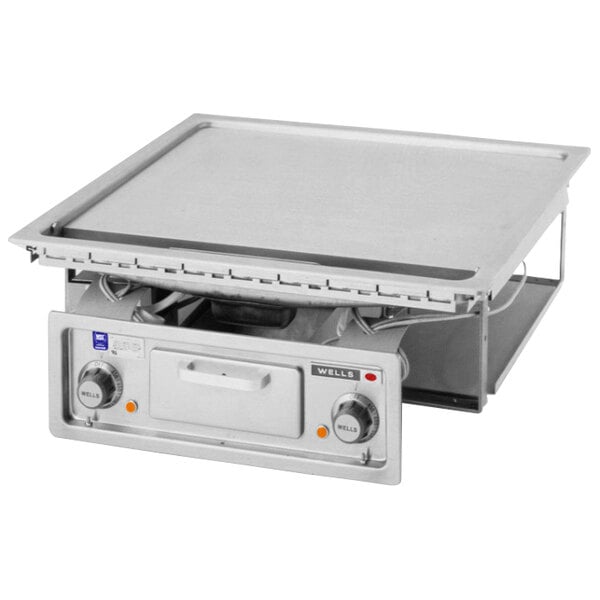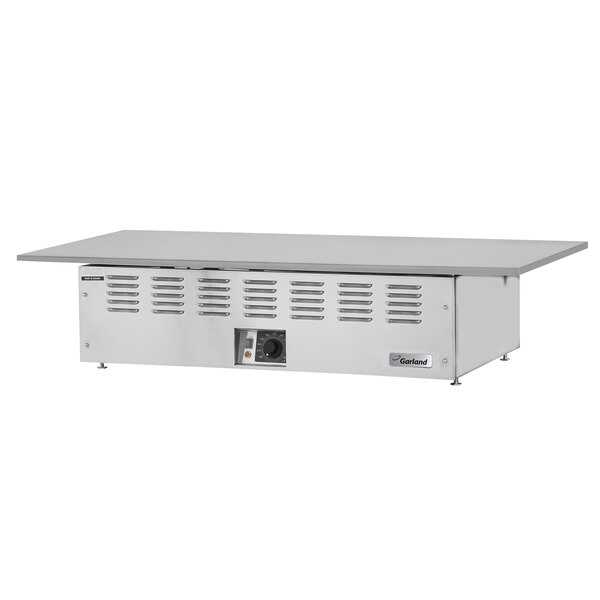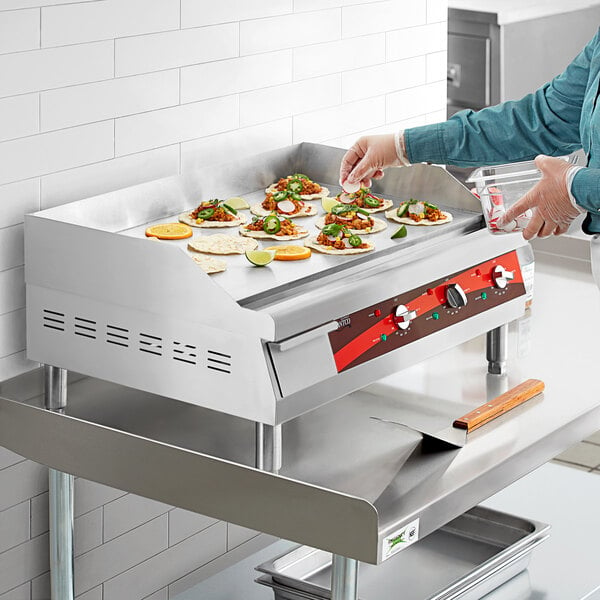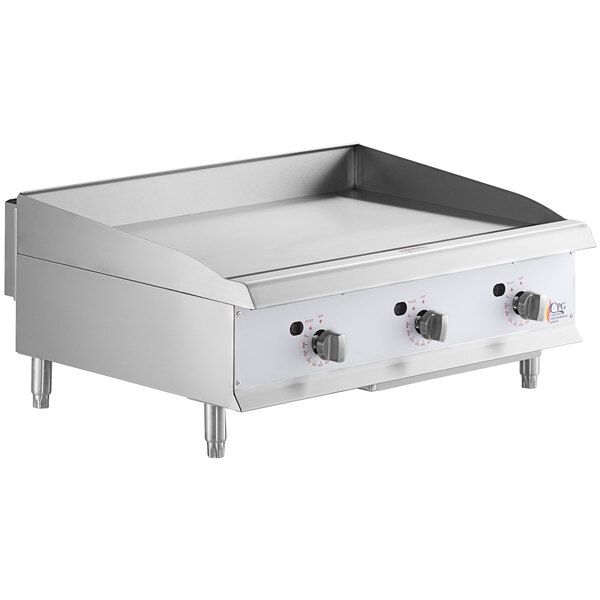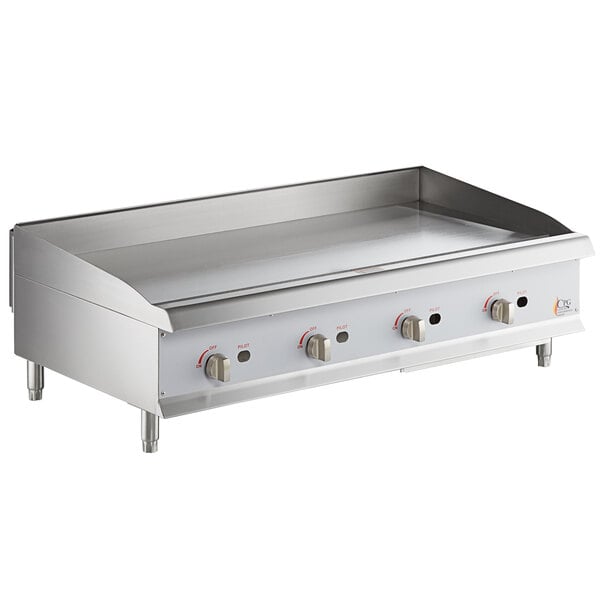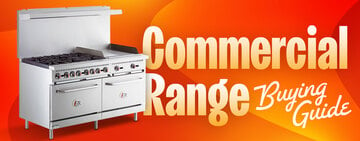Plate Material
Traditional griddle plates are crafted out of durable steel, and work well in most applications. However, some establishments may find that a chrome top griddle is to their liking. Chrome griddles are simple to clean and feature an easy-release surface that is well suited for delicate items like eggs and pancakes. Plus, they take fewer BTUs to operate and have better heat retention properties than a steel plate model. This creates faster heat up and recovery times as well as a cooler kitchen environment.
Shop for chrome griddles
Plate Thickness
Establishments that do a lot of breakfast items will be well suited to have a griddle with a thin plate, while kitchens handling a lot of frozen items, meats, and other lunch products can benefit from a thicker plate. Thicker griddle plates can store more heat and BTUs, enabling them to recover faster when handling large amounts of frozen product like hamburger patties. An establishment that produces a high volume of both breakfast and lunch items on the grill may wish to have two separate griddles, if possible.
General guidelines for approximating whether a griddle is standard, medium or heavy duty can be based around the following plate thicknesses; however this may vary between manufacturers:
- Standard duty: 1/2" thick griddle plate
- Medium duty: 3/4" thick griddle plate
- Heavy duty: 1" thick plate
Specialized types of griddles like the Teppanyaki models may provide different results despite plate thickness due to the arrangement of heating elements and the unit's intended purpose.
How to Clean a Griddle
No matter which plate style you choose, appropriate maintenance is critical. Griddles are a workhorse in commercial kitchens so, to prevent buildup, you must use the appropriate tools and chemicals. For additional information, be sure to check out our article on how to clean a griddle.



